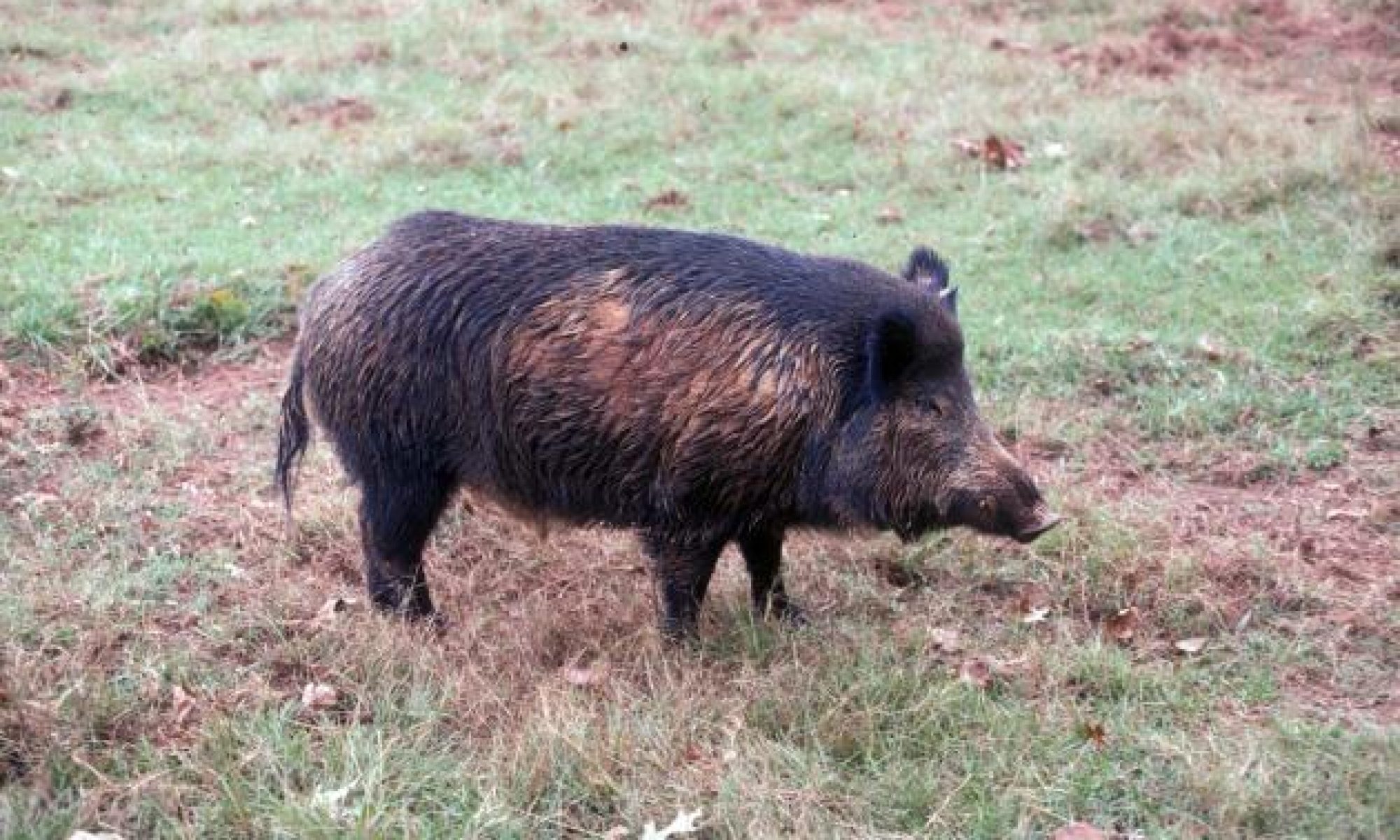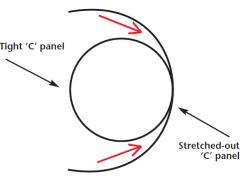Corral traps are a popular and effective method of controlling feral hogs. They are capable of catching entire sounders (groups of hogs) in one capture. Most corral traps are made of 20- by 5-ft utility panels with 4- by 4-inch square mesh and steel T-posts.
Some corral traps use head gates, while others use the panels themselves to create a funnel. These can be beneficial as head gates are typically expensive to purchase. This is the type we will discuss here.
Trap designs
There are several different funnel type traps. One is the “Figure 6” type in which the panels are shaped into the shape of the number 6 (Fig.1). This design has the outside panel stationary and the inside panel loosely laid against it allowing hogs to push their way in but not out.
Another funnel design corral trap is the Tight ‘C’ or Loose’ C’. This trap consists of two utility panels, each at least 16 by 5 ft with 4 by 4-inch mesh. One panel forms the shape of a stretched “C” for the outer portion of the trap. The other panel forms a tight “C” for the inner portion of the trap with the ends touching the stretched “C” panel (Fig. 2). The T-posts are set on the outside of the panels for added support.
The Wexford or heart-shaped design is also very popular and effective. This trap is shaped as a heart with the two lobes forming the funnel of the trap (Fig. 3 and 4). To build this trap tie the desired number of utility panels together with bailing wire. Then shape the trap into a heart. The funnel neck should be approximately 24 inches wide at the start and narrow down toward the interior where the panels should lay against each other. T-posts should then be placed and wired to the panels at 4-ft intervals on the exterior of the trap.
Funnel design traps may not be as effective with trap-shy hogs, as they must push their way into the trap. Also, loading live hogs into a trailer from a funnel trap can be difficult. However, these designs cut costs on materials and can prove to be an effective method for feral hog removal.
|
|
| Figure 1. Figure “6” corral trap design. |
|
|
| Figure 2. Tight “C” corral trap. |
|
|
| Figure 3. Funnel of Wexford, or Heart-shaped, corral trap. Photo courtesy of Jared Timmons, Texas AgriLife Extension |
|
|
| Figure 4. Wexford, or Heart-shaped, corral trap. Photo courtesy of Jared Timmons, Texas AgriLife Extension |




